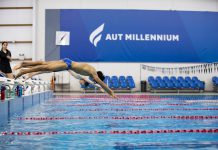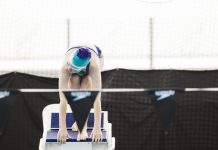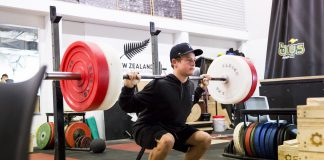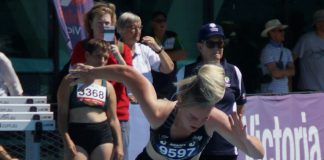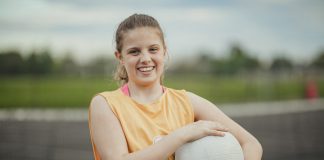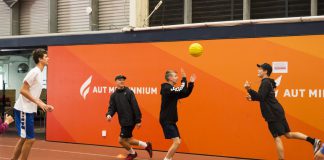The benefits of participating in sport and physical activity are well known: you learn about team work and communication, how to commit to something meaningful and persevere through setbacks and obstacles.
What’s more, you get all the benefits that come with being active.
However, some things are less obvious. Like bone health, for example.
Reaching your full genetic potential during adolescence is vital in order to limit the troubles that come with brittle bones in sport during later life.
I recently chatted with Dr Judith May, a sports and exercise physician who’s travelled with various NZ teams to World Championships, and Commonwealth and Olympic Games.
I met Judith last year when she presented at our Endurance Performance Summit on a topic that intrigued me.
Here’s what I learnt. It’s fascinating (and hugely important) stuff.
The effect of exercise on bone growth
Bone adapts to the mechanical stress of physical activity. During a jump for example, the contractions of the leg muscles required to propel you into the air, as well as the ground reaction force on landing, causes your bone to undergo deformation.
What follows is a rebuilding process. Bone cells, called osteocytes, detect this deformation and respond by stimulating osteoblast cells to build stronger and denser bone.
From birth to the age of 30, we’re constantly rebuilding bone. Critically, the rate at which this happens accelerates significantly between 12 and 18 years of age. So much so that your bone mass doubles during this time!
But here’s the thing.
If anything happens during your adolescence that affects bone growth, you end up with a reduced peak bone mass. It’s something you never fully recover from, increasing your risk of acute bone fracture and osteoporosis in later life.
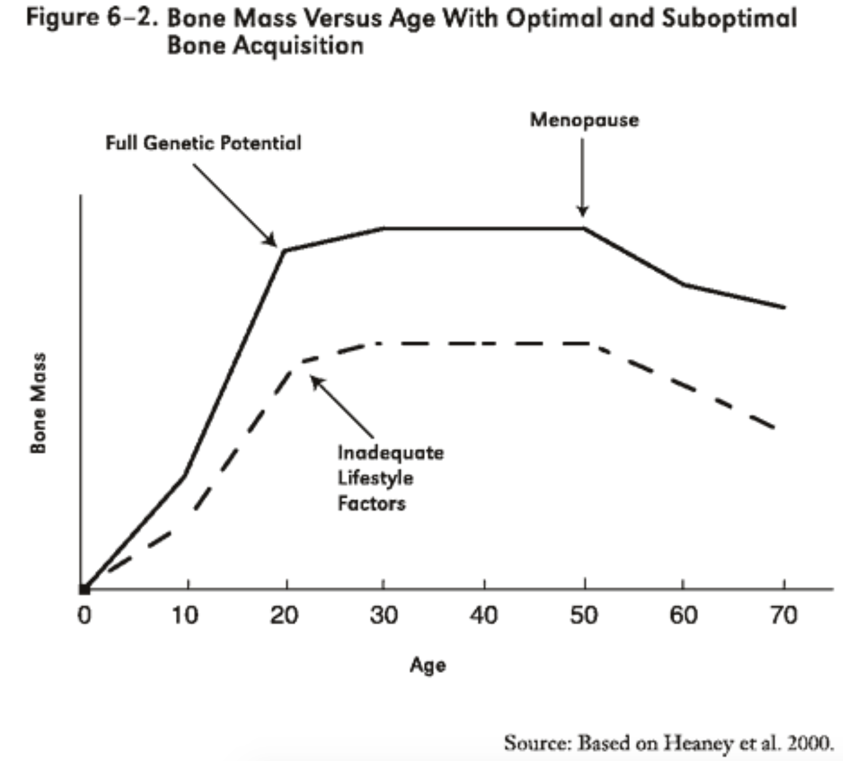
3 critical ingredients to bone growth
Given the importance of bone mass, here are 3 things to get right in your teens to make sure you maximise it:
-
Exercise
Exercise stimulates bone growth, but not any exercise will. The way and degree to which exercise loads bone is important.
Firstly, exercise must be high impact. Swimming, for example, wouldn’t meet this criteria because it’s a non-weight bearing activity meaning there’s insufficient mechanical stress on the bone to stimulate growth.
However, strength training and ball sports, which involve a lot of jumping, accelerating and change of direction, are great ways to stimulate bone growth.
For new bone to form you need a ground reaction force of at least 2.5 times your body weight, which sports like netball, football and rugby easily achieve. Gymnastics and track and field are also great options for bone health.
Secondly, exercise must involve irregular movement. Bone adapts to the type of stress it endures. So, if the movement doesn’t change much the bone stops adapting.
For example, think about endurance running where all the stress occurs in a vertical direction.
Other endurance sports, including triathlon and cycling, are also poor at stimulating bone growth because they’re too repetitive and low impact.
If you are a swimmer, triathlete, distance runner or cyclist, make sure you incorporate some sort of high impact sport into your training.
Lastly, exercise must hit all of the body parts. Bone growth is site-specific, which means that only bone experiencing ‘load’ will be stimulated to grow.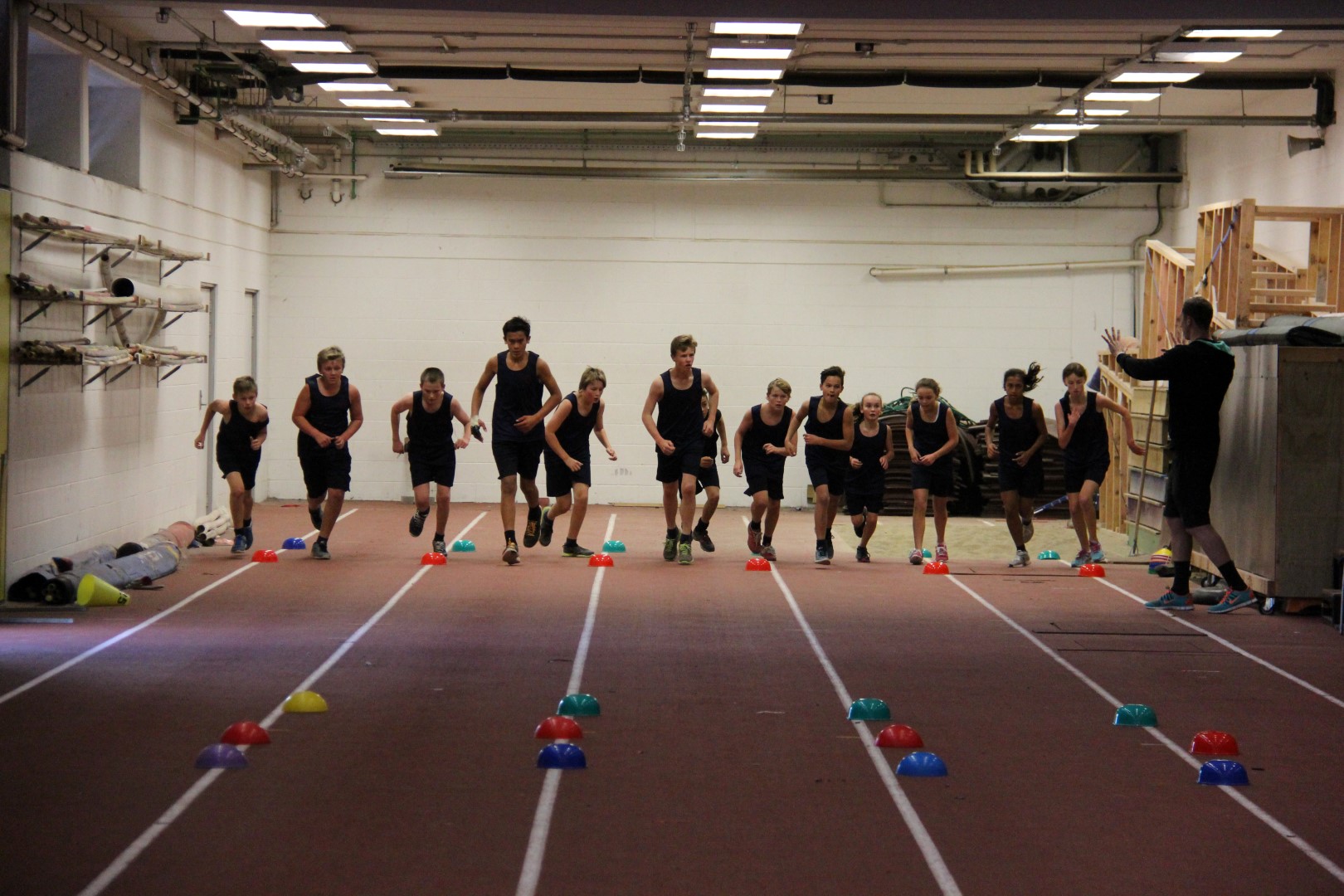
-
Nutrition
Two micro-nutrients have a huge influence on bone growth: calcium and vitamin D.
Calcium
Calcium makes up to 90% of your bone mineral content, so no wonder why it’s such an important factor when it comes to bone health.
On average, a young athlete requires 1200-1500mg of calcium per day. You can find calcium in leafy greens and various seafood, however, you need to consume huge amounts of these foods to get your daily requirements.
The best source of calcium is dairy foods. One serve (e.g. a glass of milk) delivers about 300mg of calcium, so 4-5 serves of dairy per day is required to reach your recommended intake.
Importantly, calcium from real food, rather than supplements, is the way to go as it offers better bioavailability (i.e. the calcium is used much more effectively by the body).
Vitamin D
To optimise the calcium you consume vitamin D is your friend. Why? Because it improves calcium absorption in the gut and well as increasing calcium mineralisation in the bone.
The best source of vitamin D is the sun. All it takes to get your recommended daily dose is 10 minutes of skin exposure in summer, 20 minutes in autumn and half an hour in winter. However, sunscreen blocks out 99% of vitamin D production, so this is the only time you go without.
-
Energy Availability
If you’re training a lot and not eating enough, your body conserves energy by suppressing its metabolic rate. It does this by down-regulating the hormones IGF-1, thyroid hormone and leptin, which are critical for normal physiological function including bone growth.
The risk of low energy availability increases in early specialisation sports such as gymnastics, as well as sports motivated by aesthetics like dance and where the energy requirements of training and competition are high such as triathlon.
And here’s the interesting thing: if you have low energy availability, you negate all the positive effects that both exercise and nutrition have on the bone.
To Sum Up
What you do and eat during adolescence has a huge influence on bone growth. Participating in a diverse range of sports involving some high impact activity, with the addition of reaching your recommended daily intakes of energy, calcium and vitamin D, will reduce the risk of fracturing bones in your sport and facing osteoporosis in later life.
A special thanks to Dr Judith May for passing her knowledge on to me.













